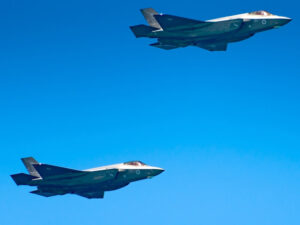Simply stated, “grand strategy” is a country’s plan for using its military and non-military resources to achieve identified national interests. Key aspects of grand strategy typically include choosing the primary versus secondary theaters in war, allocating resources among the various military services, deciding the types of armaments to manufacture and determining which international alliances best support national goals.
In the U.S., the political leadership determines grand strategy with input from senior military officials.
During recent negotiations in the U.S. House of Representatives to finish a draft of the 2024 National Defense Authorization Act that allocates annual defense funding, I was disappointed and concerned by the breadth of support for two amendments that would reduce or terminate funding for military assistance to the Ukraine.
Fortunately, both amendments failed to pass, but they received the votes of 70 members for one and 89 members for the other. The congressional support for pulling back assistance to Ukraine generally tracks with polls showing that many Americans are opposed to continued funding for Ukraine.
There is always an isolationist strain that runs through the U.S. body politic —a desire to stay out of other nation’s conflicts. Sometimes it’s stronger than other times. But as a former Army strategist, I am having a very hard time understanding why so many Americans want to cut off funding and don’t see the strategic value of helping Ukrainians defend their country.
Our 2023 National Military Strategy identifies Russia, and to a greater extent China, as the two primary threats to the security of the United States. It seems to me that the U.S. strategic interest in the Ukraine conflict is crystal clear: to remove a major threat to U.S. and European security for the indefinite future.
In reality, Ukraine is fighting our war too, because if Putin is successful in dominating or absorbing all of Ukraine into Russia — which still appears to be his goal — he won’t stop there.
Putin’s strategic goal is to make Russia great again and a major player on the international stage. If he is successful in Ukraine, he is likely to turn on other former members of the defunct Soviet Union and Russia-dominated Warsaw Pact, some of which are now members of NATO. As we did in World Wars I and II, the U.S. would be forced to defend Europe as our grand strategy dictates — because this region is vital to U.S. economic and political interests.
Signs of Russia on the ropes
Ukraine with Western support is winning, and it is only a matter of time before the Russian military is driven back into Russia. There are powerful signs of pending Russian defeat.
- The Russian military command is in disarray in the aftermath of the Wagner Group’s recent mutiny. In typical Russian fashion, a witch hunt is on to ferret out generals to be purged for perceived lack of loyalty to Putin. Purges in Russia typically don’t end well for the military. When Stalin purged the Russian officer corps in the late 1930s, Finland gave the Russian Army a bloody nose.
- The 600-mile-long Russian front line is a thin crust with almost no reserves. Once the Ukrainians find a weak place to break through, the whole Russian front will collapse.
- Due to the efforts of more than 50 nations coordinating their support to Ukraine through the U.S.-led Ukraine Defense Contact Group, Ukraine is steadily rolling back the Russian invader. Under U.S. leadership, NATO is more unified and focused on the threat Russia represents to Europe and the West in general as the just-concluded NATO Summit in Lithuania demonstrated.
- The Russian economy is buckling. Oil and gas revenues are down almost 50% for the first half of 2023. Russia’s current account surplus fell sharply to $5.4 billion in the second quarter of 2023, from $76.7 billion in the previous year. The value of the Russian ruble is at a 15-month low. Targeted sanctions levied by the U.S. and the European Union are crippling the Russian military industrial base, forcing Russia to ask other rogue states like North Korea and Iran for help.
Yes, our assistance to help Ukraine resist Russian aggression is costing a lot of money. But one of our two identified major military opponents is getting a drubbing it won’t recover from in our lifetimes. And we don’t have to have any boots on the ground.
From a grand strategy perspective, our support for Ukraine is a bargain of historic proportions.







